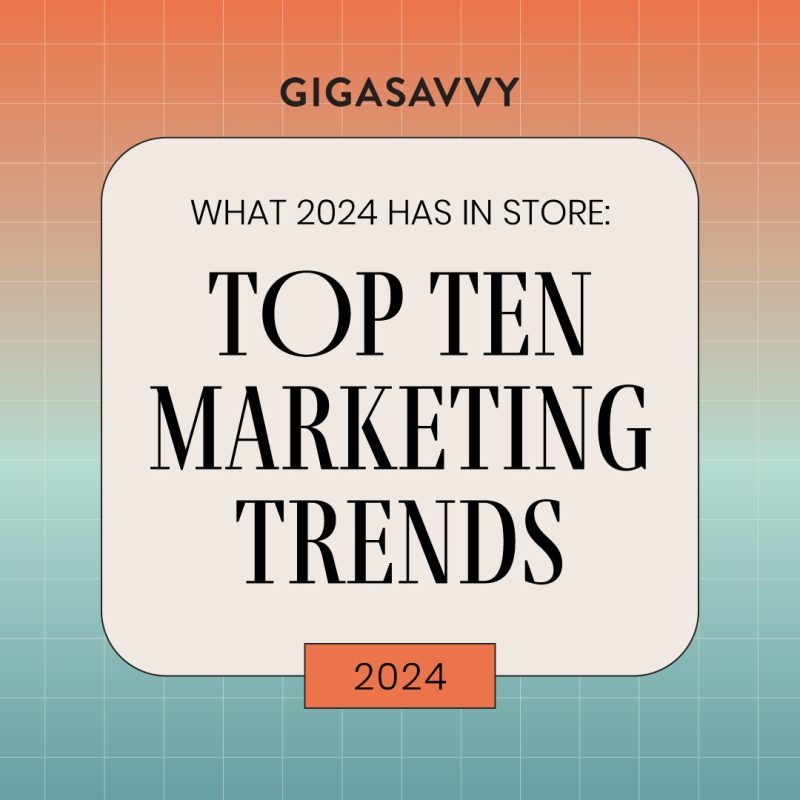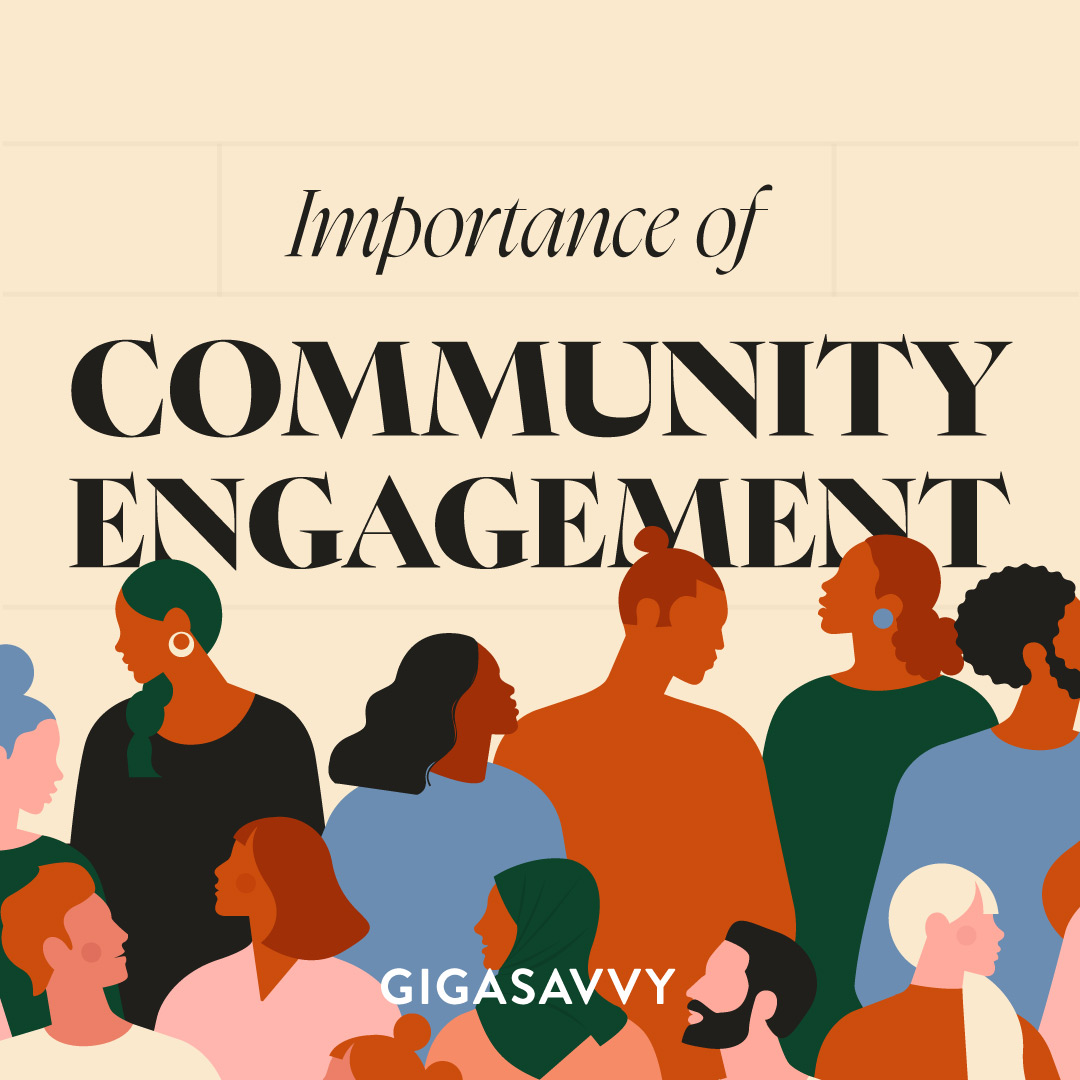As AI has exploded and certain social media platforms have all but imploded, marketers have experienced a LOT of change in 2023, which can make planning for 2024 and beyond a bit of a challenge. To help you make sure you’re focusing your attention and resources in all the right places, we’ve compiled a list of the top 10 marketing trends we see happening right now.
1. Advertising Will Be More Interactive and Immersive
In the coming year, we expect to see an increase in the use of augmented reality (AR), which allows users to leverage smartphones and other devices to overlay and interact with static or moving images within their real environment. This technology is making it easier than ever for consumers to “try before they buy.”
With AR, consumers have access to an increasing number of ways to test out big ticket purchases, including virtually placing their furniture in a new home and then walking through each room, visiting far-away travel destinations, and checking out the view of the stage before they shell out extra money for premium concert tickets.
As the technology becomes easier to deploy, brands are increasingly using augmented reality to increase engagement and gamify purchases for smaller ticket items as well — so much so that this form of advertising is expected to grow by more than 41% over the next ten years. Brands are leveraging the technology to provide customers a more seamless shopping experience with virtual dressing rooms and makeup studios, creating branded filters that users can interact with and share on social media, and developing immersive games that motivate consumers and allow shoppers to earn redeemable loyalty points.
2. Video Advertising Will Continue to Grow
Video killed the radio star in 1979 and has only picked up since then. 91% of marketers are currently using video content, and nearly 100% of buyers turn to videos to learn about a product or service before making a decision.
With the advent of smartphones, short-form video content has become a regular part of our daily lives. US adults spend 3 hours a day watching digital video (in addition to 3 hours of television). As handheld devices have made video production more accessible, a variety of new video formats have been introduced and have gained in popularity. Today, some of the most popular video formats are live stream videos, search-optimized video, and social media stories.
While launching a video ad may be easier than ever, differentiating from all of the available noise is becoming more challenging. Brands will need to figure out the right mix of quality over quantity, and dig deeper into authentic and creative storytelling with compelling hooks to provide value to their viewers and keep them engaged.
3. Micro & Nano-Influencer Sponsorships Will Increase, But Be More Subtle
There has been a recent shift in the world of influencer marketing, and it’s all about tapping into the power of small. Micro and nano-influencers, with fewer than 50,000 followers, are showing us that you don’t need big numbers to have a big impact. Due to their more intimate relationships with their followers, these influencers’ sponsored posts feel more like the natural and genuine recommendations, rather than ads.
Increasingly, brands are choosing to work with influencers who have smaller followings because their content is perceived as being more real in a world where consumers are actively trying to avoid blatant ads and prefer to purchase from someone that they feel connected to, rather than feel tricked into a purchase by a mega or macro personality. In fact, 45% of Gen Z have boycotted a business that was not transparent in their advertising.
Micro and nano influencers also allow for better targeting, as they often focus on a specific niche and speak to their audiences’ passions directly. These audiences are communities that trust, interact, engage with each other. Micro influencers get 47% more engagement on their posts compared to macro influencers.
Brands can often achieve macro-level reach for the same cost by partnering with multiple micro or nano influencers at the same time. This helps spread their message in a more down-to-earth, authentic fashion. But to make the most of these partnerships, brands need to understand that it’s not about simply pushing a product, it’s about subtly and seamlessly fitting into their influencers’ lifestyles in a way that makes sense. This opens up far more opportunities to engage the community and promote real, positive conversations about products.
4. AI Will Power More Personalized Marketing
It’s no surprise AI will continue to play a pivotal role in delivering personalized customer experiences in 2024. Data is the heart of personalized marketing, but consumer behavior changes constantly, and it’s unrealistic to expect marketers to analyze large volumes of data and garner actionable insights in real time. AI-driven algorithms can analyze enormous amounts of data to create highly-focused, curated consumer experiences.
As disruptive companies have increasingly leveraged breakthroughs in AI technology to deliver personalized, valuable, and immediate experiences, consumers have become more accustomed to this — so much so that 66% of customers expect companies to do the homework and serve up exactly what they are searching for, and 91% of consumers are more likely to shop with brands that recognize, remember, and provide relevant offers and recommendations.
In a digitally driven world, marketers can use these personalized experiences to build stronger relationships with customers and stand out from the competition. From personalized content recommendations to dynamic pricing tactics, AI will help businesses optimize marketing strategies and improve customer satisfaction – leading to higher conversion rates, loyalty, and retention.
5. Social Media Will Become More Shoppable
Shopping on social media, often referred to as “social commerce,” has reshaped the landscape of online purchasing, fusing social media engagement with e-commerce in a seamless, integrated experience. Social platforms have evolved into sophisticated marketplaces. Short-form videos on platforms like Instagram and TikTok continue to drive product discovery, particularly for Gen Z, allowing users to interact with and purchase products without ever leaving their social feeds.
This transformation is driven by native shopping features such as Instagram’s Shopping cart tab or TikTop Shop, which offer quick checkout experiences layered on top of persuasive, real-time, and sometimes user-generated content. This allows brands to meet customers where they are already spending a significant amount of time and attention.
One of the keys behind this explosion of social commerce is the use of interactive content, which engages users through influencer partnerships, live shopping events, and even virtual try-ons. This innovative strategy goes beyond traditional advertising and leverages influencer collaborations, once focused on brand awareness, to generate sales with shoppable posts.
As platforms continue to integrate more immersive experiences that combine the convenience of e-commerce with the thrill of real-time engagement, brands tap into the opportunities to have 10x the conversion rate of average ecommerce marketing. On Instagram alone, 70% of users have made a purchase directly from a brand’s shoppable post.
6. CMOs and Marketing Executives Will be Subject to Higher Expectations
As technology and digital communication continues to evolve, the C-Suite is being asked to rethink how they look at marketing. Beyond curating brand perceptions, marketers are now tasked with a much larger mission of driving culture forward. There is social pressure on marketers to drive real change in important world issues such as sustainability, DEI, and economic growth.
But while the expectations are increasing, resources are decreasing. 86% of C-Suite Executives feel they have missed revenue and/or customer growth opportunities due to lack of resources or niche expertise and 60% of marketing leaders feel that a lack of talent capacity is their number one challenge. CMOs have hit the lowest tenure in over a decade at barely 39 months with 70% of polled marketing leaders sharing that economic stressors had led to burnout.
As the C-Suite continues to shift and adapt to social pressures, new technologies, and the increased need for stronger differentiation, CMOs will need to broaden their scope of work and partner more closely with their CFO, CIO, COO, CEO and agency partners. Silo-busting is evolving from trend to necessity, and marketers are perfectly positioned to mediate some of the more impactful conversations on the table.
7. Search is Becoming a Multi-Sensory Experience
As AI has helped to improve natural language processing, voice search has become commonplace on many platforms from search engines to social media, and across a range of devices — including smartphones, TV remotes and personal assistant devices.
Although this technology is only widely available in the western world, in 2024 we are on pace to have more personal voice assistants than there are people on this planet. More than half of adults report completing a voice search daily, resulting in a billion voice searches monthly, and that number is continuing to grow.
And shifting consumer behaviors don’t stop with simply speaking search commands into a smart device. Today’s consumer is also likely to conduct a visual search. Google Lens now also allows 8M users to capture images with their smartphones to initiate visual search queries each month, while Pinterest’s robust visual search capabilities shows 600M consumers where to buy products similar to images they’ve viewed. Social media platforms are quickly following suit, helping consumers to spend money anywhere they are spending their time.
Last but not least, video search is far from being left out of the game. YouTubers now complete an astonishing 3B searches per month.And TikTok, while not a search platform, seems headed in this direction as well, with users searching up how-to videos in the #TikTokTaughtMe trend.
These trends have important implications for marketers. To help ensure your brand is found across any type of search, traditional SEO efforts need to be bolstered with content that is designed for Voice Search Optimization (VSO) and visual search. This means ensuring that your website includes engaging and descriptive messaging that answers common customer questions and building out strong image and video libraries, with products shot from multiple angles, to help consumers find your products as a match for their visual and video searches.
8. Consumers Will Continue to Seek Sustainable and Purpose-Driven Brands
Humans are compelled to make purchases based on emotional rewards. This helps to explain why so many consumers say that they wish to support brands that align with their values. Consumers are demanding social change from brands, and companies are pushed to increase their sustainability initiatives or even hire a CSO and build out an entire department.
While consumers remain vocal about the importance of ESG, some companies struggle to generate high enough demand for their more expensive sustainable products. This paradox comes from consumers deeply valuing purpose driven and sustainable initiatives, while also feeling the weight of inflation. 72% of consumers say that external factors such as inflation, social movements, and climate change are impacting their lives more than in the past, yet 78% of US consumers prioritize a sustainable lifestyle.
As marketing leaders seek to find solutions that work for both their business and their customers, implementing small, attainable changes can be a powerful way to be present in the public eye while also creating real impact. One place to start is with the United Nations Sustainable Development Goals. This framework provides 17 options to help identify areas where brands can be poised for success, and gain collaborative support from other brands seeking the same results.
9. Brands Will Shore-Up 1st Party Data to Combat Data Privacy Restrictions
With the implementation of stronger data protection laws, marketers are finding it important to work with operations and IT to build out better first-party data as a valuable alternative to third-party data sources. First-party data includes any information that a brand collects directly from its customers from interactions, feedback, profiles, purchase history, and website behavior.
By collecting this data directly from customers, brands can establish trust with their audience while gaining valuable insights into their preferences and behavior. Consumers appreciate brands who allow them to have this higher level of control over their personal data. According to recent studies, 61% of consumers feel like they’ve lost control over how their personal information is used. This is a significant increase from the 46% reported in 2019.
Not only is first party data collection a safer bet for minimizing privacy concerns, but it allows brands to build stronger relationships with customers by improving their experiences. Personal data equips brands to identify pain points in the purchase journey, tailor their marketing efforts and better meet consumers’ needs, which is highly valuable in today’s market.
10. Increased Investment in Brand Building
We’ve discussed several ways that technology is making it easier for brands and consumers to find each other and connect. This is both a blessing and a curse. Unfortunately, all of these advances also make it easier for bad actors to get in front of your customers as well.
As consumers flock to AI-enabled tools to help them find what they seek, they are simultaneously becoming more skeptical of AI-driven content, and are trying to protect themselves from it, with nearly half of online consumers installing ad blockers to avoid being manipulated by the many fly-by-night organizations that show up on their social feeds.
In the midst of this growing distrust, brands are leaning into their biggest asset – authenticity. In a recent study, 90% of marketing executives said they were planning to expand on their audience engagement by increasing their online and social media presence, with 66% of them focused specifically on building their brand equity by strengthening brand trust and loyalty. The most credible brands are planning to increase ad spending by more than 8% in 2024 to build and protect customer relationships.
With the rapid changes in the digital marketing landscape, 2024 is sure to be another whirlwind for marketers as they contend with AI advances, shifts in content consumption and the continuous entry of new competitors who appear to promise the world, even if they cannot deliver it. Brands have an opportunity to respond by leveraging every touchpoint to personalize their approach to marketing and develop more real, two-way relationships with their customers. Investing in building an authentic brand presence will help to create a strong foundation of trust and drive consumer loyalty.
Gigasavvy is an award-winning brand strategy and creative agency that has helped many brands grow with strategic go-to-market planning and authentic brand storytelling. Contact us to see how we can help bring your brand to life.


